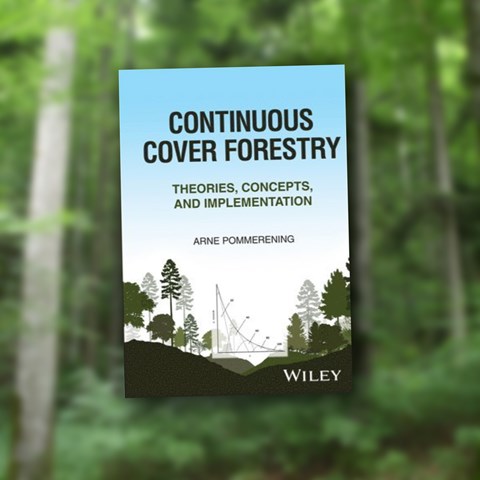Contact
Department of Forest Ecology and Management, Department of Forest Ecology and Management, joint staff

Continuous cover forestry, CCF, also referred to as close-to-nature forestry, has become a standard model in many European countries pursuing sustainable forest management. With nearly 25 years of experience in teaching the method, SLU Professor Arne Pommerening describes the theory, practice and training of CCF in his textbook.
In pursuit of sustainable forestry, many countries today have forest policies prescribing management that exclude large-scale clearcuts for environmental reasons. Some of them fall under the conceptual umbrella of Continuous Cover Forestry, which has become a standard in several countries, especially in Central Europe. The different forms of CCF vary in detail, but have the same essential aim: leaving the majority of the forest intact at all times. In this way, ecosystem processes in the forest involving vegetation and soils can continue without interruption, which is seen as advantageous for both climate and biodiversity.
– An important factor in favour of CCF with regard to climate change is preserving below ground carbon stocks. In the event of a large-scale disturbance of the forest, a clearcut for example, the mechanisms binding carbon in the soil fail to work, and vast amounts of carbon are released, says Arne Pommerening, Professor at the SLU Department of Forest Ecology and Management.
Pommerening has carried out research and taught the silviculture of CCF for almost 25 years. He was also involved in the introduction of CCF in the UK in the early 2000s. Pommerening's new book, Continuous Cover Forestry - Theories, Concepts, and Implementation, is aimed at researchers, students and practitioners who desire to obtain a comprehensive foundation of knowledge in how to succeed with CCF. Managing forests in this way, unlike in rotation forestry prevalent in countries like Sweden, requires each practitioner to have a greater understanding of forest management and of basic sciences such as soil science, plant physiology and forest ecology.
– In rotation forestry, it is possible to subdivide the total work process into specialised tasks corresponding to specialised jobs similar to the situation in large factories. Some forestry staff work as experts in clearfellings, some are only responsible for tree planting and others are only concerned with thinnings. In CCF, forestry staff need to be able to have a good understanding of a wide range of forest management methods and of ecosystem and physiological processes at the same time, says Pommerening.
Every forest has its challenges when attempting to make CCF work. Likewise, the management principles need to be adapted to local environmental and logistic conditions. Therefore, the book explores the implementation of Continuous Cover Forestry from various starting points, ranging from the establishment of instant new mixed-species forests to the transformation of existing plantations and the factors that govern detailed decisions.
How CCF can be adapted for different ecosystem goods and services such as, for example, timber production, climate mitigation, conservation and recreation, is also discussed. With his experience in teaching and CCF training, Arne Pommerening has dedicated a chapter at the end of his book to methods of how to pass on the knowledge through continued education and training.
– For me personally Prof. Pommerening’s lectures were my favourite part of the silviculture course. They were an eye-opener and made me realise how big silviculture actually is and that there are many more management options for any given site than what many people make us believe.
SLU MSc student in Umeå
Zhonghua Zhao, Gangying Hui, Book review
Forest Ecosystems, Volume 10, 2023, 100155, ISSN 2197-5620,
https://doi.org/10.1016/j.fecs.2023.100155. (https://www.sciencedirect.com/science/article/pii/S2197562023000866)
Hubert Hasenauer, Book review
Trees, Forests and People, Volume 16, 2024, 100524, ISSN 2666-7193,
https://doi.org/10.1016/j.tfp.2024.100524.
(https://www.sciencedirect.com/science/article/pii/S2666719324000323)